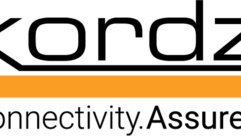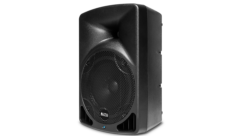

Power amplifiers aren’t just amps anymore. The range of control and built-in DSP features available now makes most such products a center of sound control and situation monitoring. The reliability and installation options make custom-tailored sound environments not only possible, but increasingly easy to implement. Efficiency in power usage and quiet heat management have also turned a big corner for these formerly troublesome components. The models surveyed here display all the latest developments targeted for installers and users.
Part of the Ashly Audio nX line of lightweight Class D amplifiers, the nXp series features Protea DSP and DIP switch programmable outputs on each channel for either 70V/100V or Low-Z operation stable down to 2Ω. The nXp models can be serial or Ethernet controlled. Other features include aux preamp outputs, instant standby mode, preset recall, fault condition logic outputs, and optional network audio and digital audio capability through the Protea Software Suite. The nXp amplifiers incorporate 32-bit SHARC DSP processing with 48kHz and 96kHz sampling and they have a built-in signal generator for test tone and noise masking.
The SF-16M from Audio Authority features 24-bit, 96-kHz Burr-Brown A/D conversion with 64-times oversampling, resulting in natural, accurate sound reproduction. Quite possibly the most impressive benefit of the SF-16M is its dynamic audio quality. The SF-16M hybrid linear supply has the headroom to respond to musical dynamics with reserve power, because its analog design allows its floating voltage rail to accommodate quick transient peaks in the music. Perfect for multi-zone applications, the SF-16M has 16 amplified output channels with DSP, 50W per channel, 16 matrixed input channels, remote FlexPort inputs, scene storage/recall, and the amp can be expanded up to 64 output channels.

Biamp Systems has a multi-channel amp solution in the MCA Series consisting of the MCA8050 with 50W per channel and the MCA 8150 with 150W per channel. The channels may be bridged in pairs. Both have line-level inputs on plug-in barrier strips, rear panel-level controls, high-pass filter switches, dual-color signal/peak indicators on front and rear panels and front panel temp/load fault indicators. These amps also have self-resetting protection against short circuit, improper load, and over-temperature conditions. They may also be fitted with internally mounted transformers for installation with distributed speaker systems. The MCA 8050 is a 2-rack unit chassis while the MCA 8150 fills 3RU.

From Crest Audio, the CKd Series amplifiers have NexSys networking functionality and an ultra-lightweight class D topology. Leading off the line, the CKd 1208 has 1250W power per channel over 8 channels. The CKd Series amps are networkable through the new Crest Audio Nx Dante-8 NexSys control module to the Crest Audio NexSys 5 and Peavey MediaMatrix NWare software programs for advanced control and audio routing. On each channel, a control voltage input is included to allow external gain control and there is a fault output on each channel so that the amp can be connected to other monitoring systems. Also featured are Crest Audio’s Active Clip Limiting and Instantaneous Gain Modulation.

With AVB technology certified by AVnu Alliance, the new DriveCore Install Network (DCi) Display Series from Crown Audio includes the 8|600ND and the 4|1250ND. These amplifiers have a cooling system that will focus cooling on the parts that need it most and the unit is compatible with HiQNet Audio Architect software. For networking and control, there are continuous load monitoring, comprehensive error reporting, pilot tone monitoring and programmable GPIO ports. DSP features include LevelMAX limiters on inputs and outputs, input/output delay, and EQ; a signal generator; and crossover. DriveCore technology also provides Direct drive “constant voltage” capabilities on a channel by channel basis at 70Vrms and 100Vrms.

dB Technologies designed the HPA series of Class HD power amps to serve equally well in touring racks and in permanent installations with their internal switchable limiter and temperature controlled fan. All models in the line feature XLR inputs and Speakon output connections. The flagship of the line is the HPA 3100L, which delivers 1200Wrms into each of its two channels using the PFC switched-mode power supply. The chassis fills a 2RU rack space and weighs less than 31lbs. The front panel includes an LED power level meter and level control for each channel along with indicator LEDs for power and bridge mode operation.

A 4-channel installation solution from Electro-Voice is the PA4150L quad 150W per channel amplifier with bridged mode for dual 315W outputs and stepped rear panel attenuation, selectable 50Hz or 300Hz high-pass filter, thermal protection, peak limiting, turn on delay, and three stage front-to-rear fans to keep the 2RU unit cool in high up-time environments. Front panel LED indictors show signal presence, 0dB, and limiting. Phoenix connectors on input and output terminals aid with quick and easy wiring. Rated output power into an 8Ω load is 100W, and the frequency response spec is 10Hz to 40kHz -1dB.

Extron’s new NetPA line of amplifiers keeps size to a minimum and eliminates fan noise by using passive cooling. For multi-channel systems, the NetPA 502 AT delivers two channels of 50W into 4Ω, and for a distributed sound setup, the NetPA 1001-70V AT provides a single channel of 100W at 70V. Both can connect to Dante-equipped processors over a standard local area network, and each includes a line-level output that can simultaneously feed an additional speaker zone or audio system. The amplifiers have recessed, detented level controls located on the rear panel for setting an individual level for each zone. They also have an ultra-low inrush current draw to prevent power circuit overload.

The G-850 2-channel amplifier from Galaxy Audio is a 2RU chassis with large front-mounted level controls along with signal presence, clip, and bridged mode LED indicators. Equipped with thermal, short, and DC circuit protection, the amp has both XLR and 1/4in. TRS jacks on the inputs and twist-lock terminals for the outputs. Each channel puts 240W into 8Ω, 360W into 4Ω, and 850W in bridged 8Ω mode. This is the mid-size unit in the G Series, which includes the G440 and the G1200. Twin fans provide cooling, and the whole unit weighs less than 37lbs.

JBL offers a versatile power amplifier solution in a small package in the Commercial Series Amplifiers (CSA), providing one or two output channels with 40W, 80W, or 120W per channel. With its integrated output transformer, the CSA Series supports 70V or 100V distributed audio systems in a fanless, single-rack-unit design. These models also have remote volume control capability using the JBL CSR-V module and standard Ethernet cable. The input and output connections are Euro-block, and there are independent bass and treble controls for each channel. On the rear panel, each unit includes an amplifier output terminal, a high-Z switch to activate the 70V/100V outputs, and a sleep disable switch.

Knoll Systems designed the MX6120 as a high-current, 6-channel amplifier for installations and it includes a buss link feature that connects some or all of the stereo inputs to the stereo bus input, making it a versatile unit. The amp is rated at 120Wrms per channel with automatic protection for low impedance, overheating, overloading, and over/under voltage. The MX6120 is a class A/B design with gold RCA jacks and level adjustments on each channel, detachable screw terminals for the outputs, and a side-mounted fan for internal cooling. The unit occupies two rack spaces, and it features a trigger input to remotely power the amp up or down.

The D Series amplifiers from Lab.Gruppen are aimed at the installation market with three power configurations and two variants, one with Lake processing and Dante, and the other with Tesira by Biamp for seamless integration with the Tesira DSP platform. At the lower power end of the Tesira model range, the D80:4T/Ta with 8000W has the same innovative Rational Power Management (RPM) feature as the others. This allows output power to be allocated among the channels to suit the specific loads demanded by the installation. Up to 5000W can be assigned to one channel while the others divide the remaining power for lesser loads. In the Tesira environment, the amp can be controlled and monitored over Cat-5e/6.

Mackie’s amps in the FRS Series weigh just 22lbs. or less and feature Fast Recovery circuitry to instantly regain normal operation after clipping. The FRS-1700 is the lower power model with 310W into 8 Ω on each channel and up to 1660W in mono bridged mode. This model features short, under-impedance, over-current, and thermal protection in addition to a defeatable clip limiter and 30Hz sub-sonic filter. Each channel has a front panel level control and a six-segment LED level meter. Noise is minimized by multi-speed fans that react to the unit’s operating temperature. Outputs are on NL4 and binding posts, while each input channel uses a combination XLR-1/4in. connector and adds an XLR loop through output.

For Powersoft, the key word is flexibility with the X Series amplifiers. They have implemented support for AES3, plug-and-play Dante networking along with analog, and each channel can switch among up to four sources. The amps also use Powersoft’s Smart Rails Management to lower idle power consumption, lower the audible noise floor, and reduce EMC issues. The X8 provides 8 channels with 1600W per channel into 8Ω, and it can match up with a wide variety of power phase and voltage scenarios. Limiting includes peak, RMS voltage, RMS current, and TruePower with more protection against over/under AC voltage, DC, thermal, shorts, and the unit mutes at power up/down.

A derivative of the CXD amps from QSC geared specifically for use with the Q-Sys platform, the CXD-Q series is aimed at integrators and consists of three 4-channel models. Built into these amps is unprecedented flexibility in combining channels and driving a wide range of speaker loads. The CXD4.5Q is capable of providing up to 5000W continuous and 8000W peak with 70V or 100V direct drive. Flexible Amplifier Summing Technology (FAST) permits total amplifier power to be distributed across 1, 2, 3, or all 4 channels and there are eight bi-directional GPIO connections that can be used for analog or digital inputs or outputs to/from Q-Sys.

Rane developed the MA3 for installation projects such as small to medium conference rooms where, as an example, they need 8Ω stereo left and right direct drive, plus a third channel of overhead 70V distribution for the far end speech reinforcement all using separate and independent channels. The MA3 can put 40W continuous power into 8Ω and 60W into 4Ω simultaneously. It features load-sensitive dynamic limiters and headroom meters while using sealed heat-tunnel forced air cooling. With its fast response limiters, the MA3 can tolerate up to 20dB of overdrive into 4Ω and 8Ω loads while staying below 1 percent THD.

For small- to mid-size PA systems, RCF has the IPS line of amps featuring independent gain dials, signal, clip, and fault LEDs, stereo XLR input/output link, switchable input sensitivity, and protection against shorts and open circuits. High-efficiency heat sinks and high-speed DC fans keep the amp cool. The IPS 3700 puts up to 1500Wrms power at 4Ω into each channel and it pushes out 3000Wrms in bridged mode. Inputs are on XLR and outputs are Speakon NL4 connectors. The Class H amp uses 800W power and weighs less than 37lbs.

The P500A 500W high-efficiency 70V power Class D amp from Speco Technologies has a single speaker output that works with either a 70V or 8Ω speaker system, and there are auxiliary inputs and outputs to daisy-chain amps. The aux inputs are on both XLR and captive screw terminals, and the aux out is XLR. The Class D design limits the weight to only 18lbs. while delivering maximum power to the speaker system. There is a front-mounted level control and front panel indicators include signal presence, clip, protection, and power.

Now available with Dante and CobraNET network capability, the FLX80-4 CV 4-channel DSP-enabled amplifier offers more than 300W of power output in various channel configurations and impedances. The amp was designed by Stewart Audio for a wide range of applications including those where remote control may be needed from a number of different devices. The Dante feature is implemented with the installation of a network card that provides 2 channels of network connectivity. The amp takes up only a half rack space and weighs no more than 4.5lbs. Quick and easy programming can be done through the unit’s USB port.

For boardrooms and signage applications where hardware space is limited, TOA Electronics has the AV-60S-AM micro Class D amplifier with 60W at 4Ω, or 70V and three inputs with an input sensitivity switch. Two of these amps mounted side by side use only one rack space and there are front-mounted bass, treble, and volume controls. There are LED indicators for signal presence, peak, protection activity, and power. The Energy Star rated unit has auto off/standby along with a remote volume control port. The protection circuitry includes thermal and overcurrent.
The XMV Series amplifiers from Yamaha were developed for commercial installation. The 4-channel amps are rated at 140W and 280W and are available in either YDIF or Dante versions. The 4 channels can be used in bridged mode, are high impedance and selectable in pairs, and can be controlled remotely by the MTX software. As with the other models in the line, the XMV4280-D can operate in 70V and low-impedance modes simultaneously by setting the mode with the DIP switches on the rear panel. Power can be allocated between channels to suit different speaker loads.











